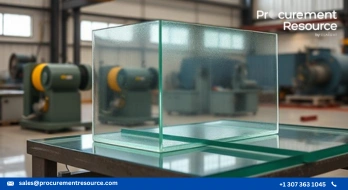Lonza will Employ an Innovative Approach to Reduce Nitrous Oxide Emissions by the End of 2021

- Lonza notified the public about nitrous oxide emissions generated by niacin manufacturing at the Visp facility in February 2020.
- During the same time, the business also notified that a catalyser would be installed by the end of 2021, reducing emissions by at least 98 percent.
- Since that declaration, external supply concerns caused by the COVID-19 epidemic have caused delays.
- Thanks to solid communication with the supplier, the delivery issues have finally been rectified. As anticipated, the system is on track to be finished by the end of 2021.
During a routine measurement at the Visp, CH location, Lonza identified the nitrous oxide emissions. As soon as a third party validated the findings, work on a technological solution to minimise emissions began, which was developed in close collaboration with the Federal Office for the Environment (FOEN). Lonza will cut nitrous oxide emissions in niacin manufacturing by at least 98 percent by installing a catalyser.
Despite the lack of statutory restrictions, the catalyser is a technological workaround that maintains nitrous oxide emissions to a minimum. Lonza is pre-funding the cost of implementation, which is estimated to be around (Swiss franc) CHF 12 million. Regardless of price, the discovery of technical solutions to minimise emissions has always been the driving force for Lonza.
The catalyser's planning application was filed in November 2019, when preliminary construction was in progress and material orders were placed. Lonza acquired the building authorisation from the canton and the municipality at the end of January 2020 and promptly began the catalyser project.
The system has a total surface of 95 m2 and a height of 18 m. The commissioning, which had been scheduled for the end of 2021, was expected to be delayed due to delays at the catalyser supplier due to the coronavirus epidemic. These supply concerns have now been rectified, allowing Lonza to speed up the delivery. According to the most recent sources, Lonza currently anticipates that the catalyser system will be operational by the end of 2021, assuming delivery proceeds as planned and no more coronavirus-related delays.
Lonza is a Valais-based corporation with a 123-year history in the industry. They have aggressively addressed several historical concerns and effectively implemented remedies in recent years.
One example is the Rhone Valley mercury cleanup, which has already been implemented on around 70 percent of the affected residential plots of land. Lonza acquired the building authorisation from the canton and the municipality at the end of January 2020 and promptly began the catalyser project.
The headquarters of Lonza Group Ltd is in Basel, Switzerland, and the company is listed on the SIX Swiss Exchange. It is listed on the Singapore Exchange Securities Trading Limited ("SGX-ST") as a secondary market. Lonza Group Ltd is exempt from the SGX-ongoing ST's listing requirements, although it is subject to SGX-ST Listing Manual Rules 217 and 751.
Some of the topics covered in this press release may include forward-looking statements. These statements are based on Lonza Group Ltd's current assumptions and estimates, but Lonza Group Ltd cannot guarantee that the expectations and assessments will be met.
Investors should be aware that any forward-looking statements are subject to risks and uncertainties, and they should be treated as such. Due to various variables, actual outcomes may differ considerably from the forward-looking statements included in this press release in the future. Lonza Group Ltd further disclaims any intention or duty to update the information contained in this news release, except as required by law.




